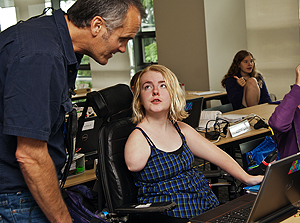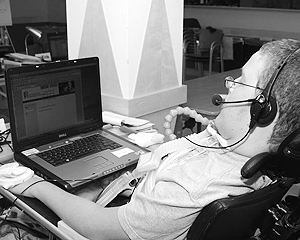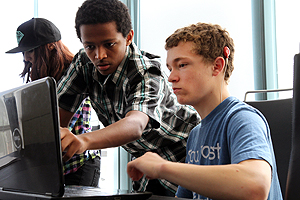Universal Design in Curriculum a Key Focus at Accessing Higher Ground (AccessComputing News - January 2014)



A Capacity Building Institute (CBI) and Conference were held at the New Mexico State University (NMSU) Corbett Center Ballrooms on October 1-2, 2013. The event was a collaborative effort from the NMSU Provost’s office, Project Enable, the NMSU Student Accessibility Services Office, and AccessComputing. Forty participants attended, representing several different departments on campus, ranging from General Counsel to the Research Library.
My name is Daniel Mooney, and I am currently a fourth-year (senior) student at Rochester Institute of Technology (RIT), in Rochester, New York. My major is information technology with an emphasis on mobile and web applications. I anticipate graduating this May. Following my graduation, I will be working as a technology analyst for Bank of America Merrill Lynch’s Global Technology and Operations Division.
Led by the Department of Computer Science & Engineering and DO-IT (Disabilities, Opportunities, Internetworking, and Technology) at the University of Washington, AccessComputing partners with Gallaudet University, Landmark College, and Rochester Institute of Technology.
The 2013 Community Premiere was a fitting end to the seventh and final year of the Summer Academy for Advancing Deaf and Hard of Hearing in Computing, where students from all over the United States came to Seattle to find out if a career in computing was the ticket to a great future.
AccessComputing has just launched a redesigned website with a new look and feel as well as new navigation, search capability, content, and features.
The new Choose Computing
Students with disabilities:
Educators and employers:

Led by the Department of Computer Science & Engineering and DO-IT (Disabilities, Opportunities, Internetworking, and Technology) at the University of Washington, AccessComputing is supported by the National Science Foundation (Grant No. CNS-0540615, CNS-0837508, and CNS-1042260). Any opinions, findings, and conclusions or recommendations expressed in this material are those of the authors and do not necessarily reflect the views of the National Science Foundation.